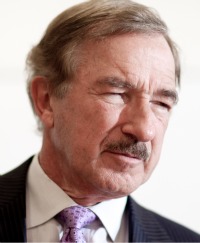Narrowbody production rate increases have proven controversial, but leasing guru Steve Udvar-Hazy is in favour, writes Laura Mueller in Los Angeles
Airbus recently announced a second hike in its A320 family aircraft production rate in less than six months. The manufacturer is stepping up its monthly production rate to 40 aircraft per month by the first quarter of 2012, drawing a varied response from market observers.
|
|---|
© Tracey Morris |
Commenting on the changes, Air Lease chief executive Steven Udvar-Hazy says: "Two years ago I would have said that we are overproducing, but since then we have carefully analysed all of the airlines - the top 350 in the world - to see what their retirement plans are, what their replacement cycle is, what their needs are, and we have come to the conclusion that in the next three to four years, it is possible for the industry to absorb 800 to 900 of this category aircraft, per year, ranging from the A319 to 737-900ER."
Udvar-Hazy sees the standard replacement cycle, the normalised replacement cycle and what he calls "a lag in the replacement cycle" as reasons that support his outlook for increased production rates for the next two to three years. "There is a replacement cycle underway which is affecting MD-80, MD-90, Classic 737s and, now, older A320 family aircraft. That generation of A320s does not have the latest engines and does not have many of the improvements that Airbus has incorporated in the last 20-plus years, so there is a natural replacement cycle."
Of the 800 to 900 new annual aircraft deliveries, he believes "a third or more is replacing" existing fleets. He points to American Airlines, which is replacing its MD-80s with 737-800s, and Lufthansa, which is using new single aircraft to replace its oldest aircraft. But he stresses the industry must "draw a line" between expanding fleets and replacing fleets.
"After 9/11 the industry was crushed financially and this new financial recession hurt a lot of airlines again financially, so I think there has been a lag in the replacement cycle - a lot of airlines hung onto older aircraft a lot longer than they originally would have done if the airline environment had been normal," Udvar-Hazy explains.
"Airlines put off a lot of expansion, a lot of capacity growth, because they were all tightening their belts. Buying or leasing new aircraft was not the flavour of the month because of what the world was going through. Now many airlines find themselves with ageing fleets. They are not as competitive, maintenance costs are going up, reliability is going down, they have too many aircraft types and so we have what I call a 'delayed fuse' on the replacement cycle and many airlines will play catch-up in the next five years."
Udvar-Hazy believes some of this increased production will also be absorbed by global growth in developing areas like Brazil, Russia, India, and China, where GDP growth is above the average. Historical trends show that average air traffic growth is about twice GDP growth.
"We have a standard replacement cycle, the normal replacement and we have this 'lag' in the replacement cycle, so if you put this together we don't think they are building too many aircraft," concludes Udvar-Hazy.
Source: Airline Business
























